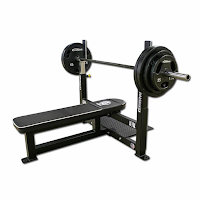Leadership Behind the Stadium Lights
This posting was authored by Tony Weaver, Assistant Professor of Leisure and Sport Management at Elon University. Tony has agreed to occasionally provide research summaries. Prior to teaching at Elon, Dr. Weaver was an athletic administrator at Iona College, Siena College and the University of North Carolina at Greensboro.

After reading the following post, Sports leadership by the stadium lights, discussing the recent public relations dilemma at Binghamton University, and paying close attention to Florida State’s Head Football Coach Bobby Bowden and the chairman of the Board of Trustees publicly discuss the coach’s future, it becomes clear that the layer of people involved in successful (or unsuccessful) athletic programs goes far beyond just those working in the athletics department. In fact, one layer of the leadership team that usually goes unnoticed, by the general public but is vitally important to any athletic program is the role of upper administration in higher education, specifically the university president or chancellor.
The NCAA has implemented numerous committees and task forces consisting of Division I presidents and chancellors to put into action “top-down control” for areas including but not limited to financial, constituency, and academic control. Critics can argue whether some presidents, chancellors and/or boards have actively responded to the task. Certainly, if one was expecting that increased presidential involvement should lead to sweeping major reforms, then perhaps these efforts have failed. However, since the Knight Commission’s report called for more presidential involvement in 1991, university leadership has been more involved in athletics. Over the last two decades, the call for presidents to be more active in athletic decisions has lead to conversation, debate and good scholarship.
Perhaps the most significant presidential involvement since the Knight Report was the hiring of former University of Oregon and Indiana University president Myles Brand in 2003 to lead the NCAA. A recent NCAA News article highlights the significant changes and increased presidential involvement during his tenure. It was during his time that presidents and chancellors became visible and were required to take control of intercollegiate athletics.
It is also important to note that those in college athletics and other areas of higher education need to understand the responsibilities of the presidency. One good book that presents an unfiltered examination in a question and answer format is Francis L. Lawrence’s Leadership in higher education: Views from the presidency. Lawrence, who served as president of Rutgers University from 1990 until 2002, interviews presidents of colleges and universities across the country and allows the reader a snapshot into the life of a higher education leader. In addition to many other areas including balancing the personal and the professional life, higher education costs, understanding the student population and working with faculty, each president also addresses the role of intercollegiate athletics.
More presidents are publicly getting involved and sharing their opinion of college athletics in higher education. Below are some personal works from presidents about their role in Division I athletics:
First, a look back at two articles in which presidents recommended change based on the philosophy of increased presidential involvement:
Read Former Texas A & M President Roy Bowen’s thoughts on his role and the role of the Board in college athletics. Bowen raises some interesting points, highlighting both the good and bad of board and presidential involvement in college athletics. Most importantly, Bowen suggests additional policies that would support presidential oversight of college athletics.
This article from Tulane University President Scott Cowen (log-in required) takes a very personal view of the influence of presidents in college athletics. In the article, President Cowen suggested many changes that he believed needed to be made in college athletics. One can debate if those changes have occurred over the last 4 years, however, there is a greater point to his article. He strongly encourages the campus community to take responsibility for their own athletic program. He states, “If each president and institution -- one by one -- works to establish the right direction locally and within its own conference, and the NCAA remains a forceful voice for change, academics and athletics can become a winning combination for us all.”
Finally, also consider reading Intercollegiate athletics and the American university: A university president's perspective by former University of Michigan president James Duderstadt. A frustrating read if you are expecting answers about how to “fix” college athletics; however, Duderstadt does offer insight into some of the difficult decisions presidents face. Below is one quote from the book that I thought was incredibly insightful, and perhaps surprising, regarding the hiring of an athletic director. While discussing his search for an athletic director while president at the University of Michigan, Duderstadt states:
“A president is required to recruit and appoint people to fill dozens of important positions in a large university: executive officers, deans and directors. But no search is more difficult to conduct than one for a new athletic director, at least at a university with big-time sports such as Michigan.” (p. 236)
Although the athletic director is in charge of the athletic program on a day-to-day basis, the long term direction of the athletic program will be a result of the support (or lack of support) by the leadership team of the university. The president or chancellor is ultimately responsible for the direction of the university, including that of its athletic programs. Over the last two decades presidents are becoming very active in athletic department decisions. Therefore, it is important for future and current intercollegiate athletic leaders to appreciate the complex relationship between the institution and athletics.


Comments